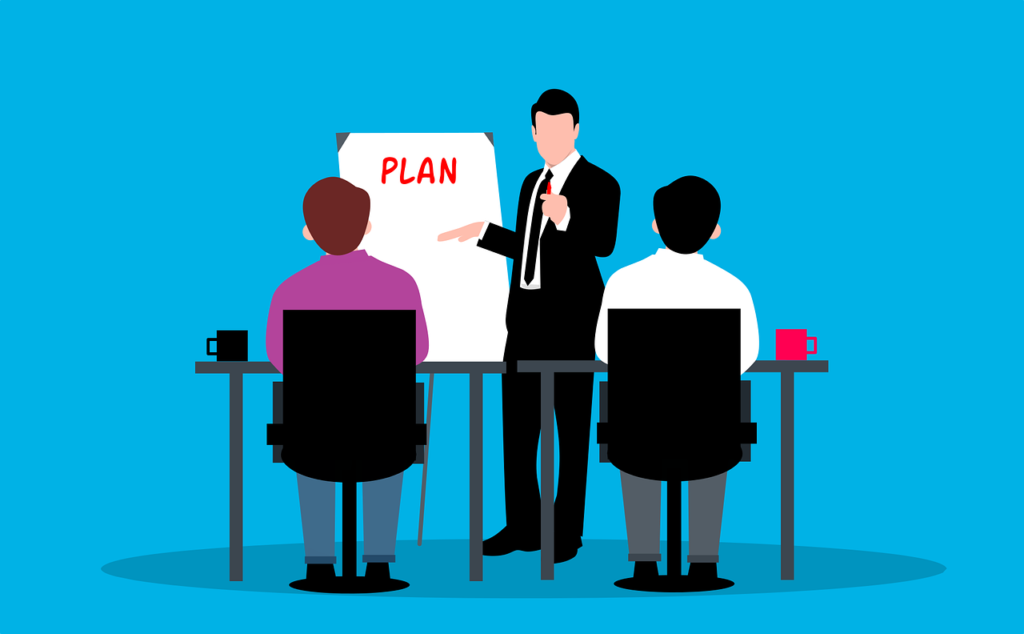Employee Development Plans (EDPs) are critical to the process of growing individuals toward organizational success. The EDPs create a bridge between personal aspirations and the needs of the organization, thus developing a culture of continuous learning and improvement. EDPs show employees a clear path for moving up the organizational ladder, which in turn results in happier, more satisfied, retained, and productive employees.

The article will therefore examine why employee development is necessary, the importance of EDPs in improving organizational productivity, and which plans can best be adopted by organizations into their systems. Furthermore, we will elucidate a simple process for developing and implementing an Employee Development Plan tailored to meet the unique needs of your team.
What is Employee Development Plan (EDP)?
An Employee Development Plan is one set of structured processes to enhance the skills, knowledge, and ability of employees and equip them to attain both their personal aspirations with the company and the strategic completeness of the organization. Rather, it is about developing a plan that allows the employees to grow in ways that add value to current and future contributions.
An EDP usually comprises a skills assessment, goal setting, development activities, and timelines. Essentially, it is a roadmap to guide an employee’s for growth and development within a company.
EDPs contain the following key components:
Assessment of Skills: Determine strengths and areas to address;
Goal Setting: Map measures for the individual’s advancement;
Development Activities: Plan for training, mentorship, etc.;
Timelines and Milestones: Set deadlines with milestones in place to gauge progress.
Importance of Employee Development Plans
It is no longer an option to invest in developing your people; it is a must. The use of EDPs is a strategic choice for increasing job satisfaction and productivity and for creating infrastructure to incubate future leaders. Some of the main reasons EDPs are vital for success are:
- Attracts and Retains Talent
In a highly competitive job market, employees desire more than just a paycheck; they want to be allowed to grow. EDPs that promote a clear advancement path assist companies in sourcing top talent, but they are also a way to show current employees that management has a stake in their future. If employees feel that joining the company means a commitment to their development, they are more likely to remain with the organization over the long term, thus reducing turnover and associated recruitment costs. - Heightens Job Satisfaction and Engagement
Employees feel strongly engaged and motivated to give their best selves when a development plan is explicitly laid out. EDPs align individual and company goals, thus letting employees feel like they are part of a larger picture. All of this gives them a sense of purpose, which ultimately translates into productivity and a positive workplace atmosphere. - Builds a Positive Company Culture
Done well, an EDP gives a lot of weight to the culture of learning and growth. Employees are encouraged to bond, exchange ideas, and support each other’s development. Such a culture is instrumental in creating future leaders while making the workforce adaptable to changes in the industry. - Creates a Skilled, Flexible Workforce
It is important for employees to remain updated with the most recent skills and knowledge since industries evolve and new technologies emerge. EDPs provide such resources as training programs and mentorship opportunities that ensure employees become flexible in times of need and able to face the challenges of the future.
Employee Development Plans come in different types. Good development plans are catered towards achieving certain needs or goals of the organization. For now, here are some of the most common ones:
Career Development Plan: This plan looks at the long-term growth opportunities and career advancement in the company. It details possible career paths and allows employees to know the steps that they have to take to achieve what they desire.
Leadership Development Plan: Focuses on nurturing the future with a plan that develops leadership skills like strategic thinking, decision-making, and team management.
Skills Development Plans: These plans may focus either on technical or soft skills that the employee requires now or in the future, like communication, project management, or development.
Performance Improvement Plan: If there are performance-related challenges an employee currently faces, a performance improvement plan creates specific targets and actions that are required to overcome the identified challenges.
Cross-Functional Development Plans: Enabling employees to gain experience and skill sets in different departments provides for a broadened view of the business and increases the versatility of the employees.
Educational Support Plans: Some companies administer programs assisting employees with further qualifications or certifications, which can include granting study leave to complete advance degrees or professional courses.
How to Create an Employee Development Plan: A Step-By-Step Process
The creation of an effective employee development plan requires a structured approach that is aligned with the aspirations of the employee as well as the organization’s opportunities. A very simple but thorough approach to developing an individual development plan can be identified as follows: - Identify Employee Goals and Aspirations
An open dialogue on the employee’s career goals should be initiated. Their interests should be tapped into and the area envisioned by the employee for self-growth in the future should be explored. - Skills Assessment
The worker’s skills and competencies should be evaluated in view of the employee’s strengths and weaknesses in some domains of work that might need improvement or some other area of development. - Align Individual Goals with Organizational Objectives
Make sure that every employee’s goals are in sync with the organization’s mission and strategic goals. That way, both the employee and the organization benefit from the progress. - Establish Specific Measurable Goals
Set clear, attainable goals with measurable outcomes. The goal could be the completion of a certain course or the attaining of a specific skill, but expectations must clearly be defined. - Determine Resources and Training Needed
List any tools, courses, or mentoring needed to accomplish the objectives set up in number 4. These could include internal resources or outside training programs. - Create a Timeline with Milestones
Generate a timeline with certain milestones and deadlines. Regular check-ins along the timeline will keep the employee and manager apprised of the goals and allow them to adjust the plan as needed. - Schedule Regular Check-In Meetings
Organize regular meetings to discuss progress against the plan, challenges faced, and any adjustments required. This ongoing support will help staff members to sustain motivation and be productive.
Best Practices for Executing Employee Development Plans
To ensure efficacy in the implementation of an EDP, the following best practices should be kept in mind:
Tailor to Individual Needs: Each development plan should focus on an individual employee. Everyone has their own set of strengths, weaknesses, and learning styles.
Employee Participation: Encourage employees to partake in the formulation of their own development plan. This way, they are made aware of the process and are therefore more likely to be motivated to pursue it to succeed.
Provide Continuous Assistance: Official mentoring or coaching during the development process will guide an employee. Also, provide opportunities for continuous learning opportunities, whether through workshops or on-the-job training.
Be Flexible: Most development plans are meant to be malleable. An employee might need other resources as he/she continues to learn and develop or might need to postpone certain goals for a while.
Common Challenges in Implementation
Employee Development Plans may also face challenges, such as the following:
Insufficient Resources: A budgetary constraint is an issue for many organizations in providing all the training or resources an employee may need. Concentrate on the development activities that add the most value.
Demotivated: Should results not be forthcoming, employees may lose interest. Be sure to keep the momentum going with regular check-ins along the way.
Time Pressures: It is challenging, though, to allow time for day-to-day activities and then to engage in development activities. Employees should feel empowered to set time aside for their development goals, but this should not create stress for them.
Final Thoughts
An Employee Development Plans is much more than a list of jobs or activities; it is an investment into human potential. Through creating elaborate, personalized plans, organizations stimulate employees to realize their full potential and innovate for long-lasting solutions.
EDPs in the business strategy don’t only benefit the individual employee but, therefore, the wellness of the entire organization. It is a partnership of growth to have a highly skilled and motivated workforce that is prepared to meet the challenges of tomorrow.

